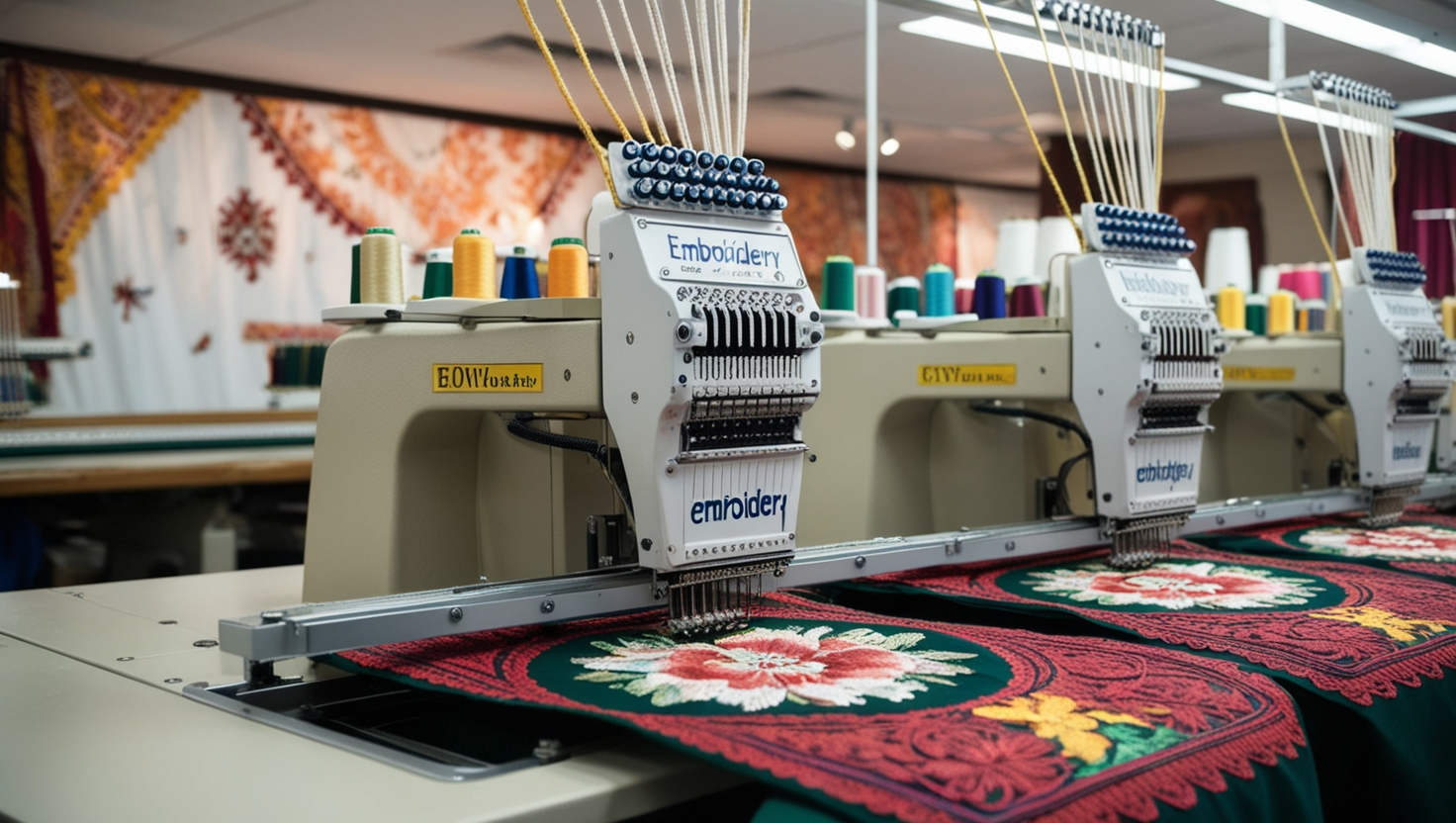Introduction
Embroidery, the art of decorating fabric with needlework, has transformed significantly over the centuries. The introduction of the embroidery machine revolutionised this craft, making intricate designs accessible to professionals and hobbyists alike. The embroidery machine has become a cornerstone in the textile and fashion industries, from enhancing efficiency to providing limitless creative possibilities. This article explores the embroidery machine’s embroidery machine’s history, types, features, and applications, offering insights into its enduring relevance.
A Brief History of the Embroidery Machine
The journey of the machine began in the 19th century. The first notable invention was the hand embroidery machine, created in 1828 by Josue Heilmann, a Frenchman whose innovation laid the groundwork for modern automated machines. Over time, technological advancements led to the development of mechanised machines capable of producing complex patterns with precision.
By the mid-20th century, computer technology had further revolutionised embroidery. Modern computerised embroidery machines integrated software that allowed users to input intricate designs, drastically reducing manual effort and production time. This evolution transformed embroidery from a painstakingly slow process into a rapidly scalable industry.
Types of Embroidery Machines
Embroidery machines come in various forms, catering to different needs and skill levels. The two primary categories are domestic and industrial machines.
Domestic Embroidery Machines
Domestic machines are designed for hobbyists and small-scale projects. These machines are compact, user-friendly, and equipped with features such as automatic thread cutting and pre-installed design patterns. While they may not match the speed of industrial models, domestic embroidery machines are perfect for personal and creative use.
Industrial Embroidery Machines
Industrial embroidery machines are built for large-scale production. They are equipped with multiple needles, allowing them to handle a wide range of thread colours without requiring manual changes. Industrial machines are used in factories and workshops to produce high volumes of embroidered goods, including apparel, home decor, and promotional items.
Multi-Needle and Single-Needle Machines
Both domestic and industrial embroidery machines can be further classified into single-needle and multi-needle machines. Single-needle machines are suitable for beginners and straightforward designs, while multi-needle machines are ideal for complex patterns and high-efficiency workflows. The choice between these depends on the user’s requirements and expertise.
Features of Modern Embroidery Machines
Modern machines have advanced features that enhance their usability and output quality. Some of the most notable features include:
Computerised Design Input
Computerised machines allow users to upload custom designs through USB drives or Wi-Fi. This feature enables precision and creative flexibility, making it easy to recreate intricate patterns.
Automatic Thread Management
Features like automatic thread cutting and tension adjustment reduce manual intervention, ensuring smooth operation and consistent results.
Large Embroidery Areas
Many embroidery machines have larger embroidery hoops, enabling users to work on expansive designs or multiple smaller patterns simultaneously.
High-Speed Operation
Modern industrial machines can operate at speeds exceeding 1,000 stitches per minute, ensuring quick production without compromising quality
Applications of Embroidery Machines
machines have found applications across diverse industries, contributing to their widespread demand and versatility.
Fashion Industry
In the fashion world, embroidery machines embellish clothing, creating intricate patterns that add value and uniqueness to garments. From casual wear to haute couture, embroidered designs are a staple in fashion.
Home Furnishings
Home decor items like curtains, tablecloths, and pillow covers often feature embroidered designs. The machine efficiently produces these items, catering to both mass production and custom orders.
Promotional Merchandise
Companies frequently use embroidered logos on uniforms, caps, and bags as part of their branding efforts. Embroidery machines’ precision and scalability make them ideal for producing promotional merchandise.
Personalised Gifts
machines are popular among entrepreneurs who offer personalised gifts. These machines create items such as monogrammed towels, baby blankets, and custom apparel, appealing to customers seeking unique and thoughtful presents.
Benefits of Using a Machine
The embroidery machine offers numerous advantages over traditional hand embroidery. These benefits include:
Efficiency and Speed
machines significantly reduce production time, allowing users to complete complex designs in minutes rather than hours.
Consistency and Precision
Machine embroidery ensures uniformity, producing designs with impeccable accuracy regardless of the complexity of the pattern.
Creative Freedom
Users can explore endless creative possibilities by uploading custom designs and experimenting with various threads and fabrics.
Scalability
Industrial machines enable businesses to scale their operations, meeting the demands of large orders without compromising quality.
Factors Influencing Embroidery Machine Prices
The cost of a machine varies widely based on its type, features, and brand. Domestic models are generally more affordable, while industrial machines command higher prices due to their advanced capabilities.
Key factors affecting machine prices include:
- Technology: Machines with computerised functions and advanced features are priced higher.
- Brand Reputation: Established brands often charge a premium for their reliable performance and customer support.
- Size and Capacity: Larger machines with multi-need setups and expansive embroidery areas are more expensive.
- Accessories: Additional accessories, such as extra hoops and specialised software, can increase the overall cost.
Maintenance and Care of Embroidery Machines
Regular maintenance is essential to ensure a machine’senance is necessary to ensure an e. Basic upkeep tasks include cleaning tasks include cleaning the machine, lubricating moving parts, and replacee.To prevent wear and tearprpreventwear and tear, it is also essential to use high-quality threads and avoid
The Future of Machines
The future of embroidery machines is bright as long as technology keeps improving. Innovations in sulikertificial intelligence and machine learning are expected to enhance design capabilities and efficiency further. Moreover, integrating eco-friendly practices, such as using sustainable materials, will align machines with global sustainability goals.
Conclusion
The embroidery machine has revolutionised the art of embroidery, transforming it into a modern, efficient, and versatile craft. From its humble beginnings as a manual tool to the sophisticated computerised models of today, the machine continues to evolve, meeting the needs of diverse users and industries. Whether for personal projects or large-scale production, the machine is an invaluable tool that combines creativity with functionality, ensuring its enduring significance in textiles.

